Ditapis dengan

CONTINENTAL PHILOSOPHY OF TECHNOSCIENCE
The key objective of this volume is to allow philosophy students and early-stage researchers to become practicing philosophers in technoscientific settings. Zwart focuses on the methodological issue of how to practice continental philosophy of technoscience today. This text draws upon continental authors such as Hegel, Engels, Heidegger, Bachelard and Lacan (and their fields of dialectics, p…
- Edisi
- -
- ISBN/ISSN
- 9783030845704
- Deskripsi Fisik
- vii, 245 p.
- Judul Seri
- -
- No. Panggil
- 501 CON H

NEW ISLAMIC URBANISM :THE ARCHITECTURE OF PUBLIC AND PRIVATE SPACE IN JEDDAH,…
Since the dawn of the oil era, cities in Saudi Arabia have witnessed rapid growth and profound societal changes. As a response to foreign architectural solutions and the increasing popularity of Western lifestyles, a distinct style of architecture and urban planning has emerged. Characterised by an emphasis on privacy, expressed through high enclosures, gates, blinds, and tinted windows, ‘New…
- Edisi
- -
- ISBN/ISSN
- 9781787356429
- Deskripsi Fisik
- xvii, 239 p. ill;
- Judul Seri
- -
- No. Panggil
- 720.9538 NEW S

ARCHITECTURE AS A WAY OF SEEING AND LEARNING :THE BUILT ENVIRONMENT AS AN ADD…
At the beginning of 2020, 66 long-term refugee camps existed along the East African Rift. Millions of young children have been born at the camps and have grown up there, yet it is unknown how their surrounding built environments affect their learning and development. Architecture as a Way of Seeing and Learning presents an architect’s take on questions many academics and humanitarians ask.…
- Edisi
- -
- ISBN/ISSN
- 9781800080119
- Deskripsi Fisik
- xvii, 189 p. ill;
- Judul Seri
- -
- No. Panggil
- 720.10309676 ARC N

RENEGOTIATING BOUNDARIES; LOCAL POLITICS IN POST-SUHARTO INDONESIA
For decades almost the only social scientists who visited Indonesia’s provinces were anthropologists. Anybody interested in politics or economics spent most of their time in Jakarta, where the action was. Our view of the world’s fourth largest country threatened to become simplistic, lacking that essential graininess. Then, in 1998, Indonesia was plunged into a crisis that could not be unde…
- Edisi
- -
- ISBN/ISSN
- 9789004260436
- Deskripsi Fisik
- -
- Judul Seri
- -
- No. Panggil
- -

LAW AND POLICY FOR THE QUANTUM AGE
It is often said that quantum technologies are poised to change the world as we know it, but cutting through the hype, what will quantum technologies actually mean for countries and their citizens? In Law and Policy for the Quantum Age, Chris Jay Hoofnagle and Simson L. Garfinkel explain the genesis of quantum information science (QIS) and the resulting quantum technologies that are most exciti…
- Edisi
- -
- ISBN/ISSN
- 9781108883719
- Deskripsi Fisik
- xxii; 578p; ill.
- Judul Seri
- -
- No. Panggil
- 530.12 LAW C

THEATRE AND WAR :NOTES FROM THE FIELD
"Nandita Dinesh places Kipling’s ""six honest serving-men"" (who, what, when, where, why, how) in productive conversation with her own experiences in conflict zones across the world to offer a theoretical and practical reflection on making theatre in times of war. This timely and important book weaves together Dinesh’s personal narrative with the public story of modern conflict, illustratin…
- Edisi
- -
- ISBN/ISSN
- 9781783742585
- Deskripsi Fisik
- 210 p
- Judul Seri
- -
- No. Panggil
- 809.293581 DIN t

WRITING MANUALS FOR THE MASSES
This open access collection of essays examines the literary advice industry since its emergence in Anglo-American literary culture in the mid-nineteenth century within the context of the professionalization of the literary field and the continued debate on creative writing as art and craft. Often dismissed as commercial and stereotypical by authors and specialists alike, literary advice has non…
- Edisi
- -
- ISBN/ISSN
- 9783030536145
- Deskripsi Fisik
- xxii; 412 PG; ill.
- Judul Seri
- -
- No. Panggil
- 808.0209 WRI w

THE PUBLIC VALUE OF THE SOCIAL SCIENCES :AN INTERPRETIVE ESSAY
What is the purpose of social science? How can social science make itself relevant to the intractable problems facing humanity in the twenty-first century? The social sciences are under threat from two main sources. One is external, reflected in a global university crisis that imposes the marketization of higher education on the ancient practice of scholarship. The other, internal threat is soc…
- Edisi
- -
- ISBN/ISSN
- 9781780931784
- Deskripsi Fisik
- xii, 240p : ill
- Judul Seri
- -
- No. Panggil
- 300.1 JHO p

AUSTRALIAN CLINICAL LEGAL EDUCATION :DESIGNING AND OPERATING A BEST PRACTICE …
Clinical legal education (CLE) is potentially the major disruptor of traditional law schools’ core functions. Good CLE challenges many central clichés of conventional learning in law—everything from case book method to the 50-minute lecture. And it can challenge a contemporary overemphasis on screen-based learning, particularly when those screens only provide information and require no int…
- Edisi
- -
- ISBN/ISSN
- 9781760461034
- Deskripsi Fisik
- -
- Judul Seri
- -
- No. Panggil
- 340.071194 EVA a

THE LAND BETWEEN TWO SEAS:ART ON THE MOVE IN THE MEDITERRANEAN AND THE BLACK …
The Land Between Two Seas: Art on the Move in the Mediterranean and the Black Sea 1300-1700 focuses on the strong riverine ties that connect the seas of the Mediterranean system (from the Western Mediterranean through the Sea of Marmara, the Black Sea and the Sea of Azov) and their hinterland. Addressing the mediating role of the Balkans between East and West all the way to Poland and Lithuania…
- Edisi
- -
- ISBN/ISSN
- 9789004515468
- Deskripsi Fisik
- 480p. : ill.
- Judul Seri
- -
- No. Panggil
- 709.4 ALI t

FROM TECHNOLOGY TRANSFER TO INTERCULTURAL DEVELOPMENT :UNDERSTANDING TECHNOLO…
The central theme of this book is the intercultural development of technology in a globalising world. Migration, tourism, information and communication technology and international trade stimulate tfhe encounter between cultures, leading to a totally new social configuration on a worldwide scale.
- Edisi
- -
- ISBN/ISSN
- 9781920382049
- Deskripsi Fisik
- i, 171 p
- Judul Seri
- -
- No. Panggil
- 303.483 VAN f
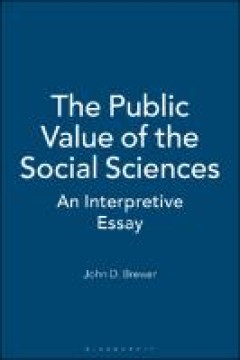
THE PUBLIC VALUE OF THE SOCIAL SCIENCES :AN INTERPRETIVE ESSAY
This book is available as open access through the Bloomsbury Open Access programme and is available on www.bloomsburycollections.com. What is the purpose of social science? How can social science make itself relevant to the intractable problems facing humanity in the twenty-first century? The social sciences are under threat from two main sources. One is external, reflected in a global universi…
- Edisi
- -
- ISBN/ISSN
- 9781780931784
- Deskripsi Fisik
- 240p
- Judul Seri
- -
- No. Panggil
- 300.941 BRE
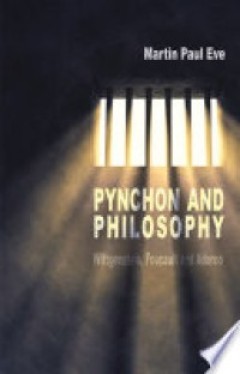
PYNCHON AND PHILOSOPHY:WITTGENSTEIN, FOUCAULT AND ADORNO
The writings of Thomas Pynchon have spawned more critical commentary than almost any other American author of the last fifty years. Pynchon’s texts are perhaps most famed for their ‘difficulty and apparent unfriendliness’, as works that require, as Inger H. Dalsgaard, Luc Herman and Brian McHale put it, ‘a collective enterprise of reading wherein none of us could succeed without the hel…
- Edisi
- -
- ISBN/ISSN
- 9781137405500
- Deskripsi Fisik
- XIII, 229p
- Judul Seri
- -
- No. Panggil
- 813.5409 MAR
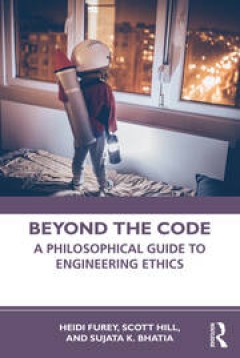
BEYOND THE CODE :A PHILOSOPHICAL GUIDE TO ENGINEERING ETHICS
For over 80 years, the National Society of Professional Engineers (NSPE) has been a leader in the promotion of ethical practice within the field of engineering. One of the Society’s greatest contributions is the formation and adoption of the NSPE Code of Ethics. But the code, with its six "Fundamental Canons," is only truly instructive if engineers can bridge the gap between principles and ac…
- Edisi
- -
- ISBN/ISSN
- 9781315643816
- Deskripsi Fisik
- xxx, 47 p
- Judul Seri
- -
- No. Panggil
- 174.962 FUR b

CIVIC LIFE ONLINE :LEARNING HOW DIGITAL MEDIA CAN ENGAGE YOUTH
The relationship of participation in online communities to civic and political engagement.Young people today have grown up living substantial portions of their lives online, seeking entertainment, social relationships, and a place to express themselves. It is clear that participation in online communities is important for many young people, but less clear how this translates into civic or polit…
- Edisi
- -
- ISBN/ISSN
- 9780262524827
- Deskripsi Fisik
- x + 206 p
- Judul Seri
- -
- No. Panggil
- 320.40835 BEN c
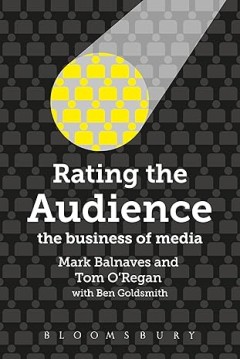
RATING THE AUDIENCE :THE BUSINESS OF MEDIA
This book is available as open access through the Bloomsbury Open Access programme and is available on www.bloomsburycollections.com. Knowing, measuring and understanding media audiences have become a multi-billion dollar business. But the convention that underpins that business, audience ratings, is in crisis. Rating the Audience is the first book to show why and how audience ratings research …
- Edisi
- -
- ISBN/ISSN
- 9781849663410
- Deskripsi Fisik
- xvi + 272 p
- Judul Seri
- -
- No. Panggil
- 302.23 MAR r

GLOBAL WAR, GLOBAL CATASTROPHE :NEUTRALS, BELLIGERENTS AND THE TRANSFORMATION…
Winner of the World War One Historical Association’s 2021 Norman B. Tomlinson, Jr. Prize Global War, Global Catastrophe presents a history of the First World War as an all-consuming industrial war that forcibly reshaped the international environment and, with it, impacted the futures of all the world’s people. Narrated chronologically, and available open access, the authors identify key the…
- Edisi
- -
- ISBN/ISSN
- 9781474275880
- Deskripsi Fisik
- 248 p
- Judul Seri
- -
- No. Panggil
- 940.3 MAA g
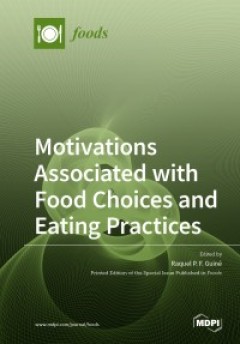
MOTIVATIONS ASSOCIATED WITH FOOD CHOICES AND EATING PRACTICES
This book is generally focused on food choice and which factors are associated with the decisions that define people’s eating behaviour. These factor are highly variable and include influences from the surrounding environment as well as the individual characteristics of each person. The book includes a number of chapters that address these issues from different points of view. Some explore th…
- Edisi
- -
- ISBN/ISSN
- 9783036514130
- Deskripsi Fisik
- ix, 253p.: ill
- Judul Seri
- -
- No. Panggil
- -

FIGHTING FOR A LIVING :COMPARATIVE HISTORY OF MILITARY LABOUR 1500-2000
Fighting for a Living investigates the circumstances that have produced starkly different systems of recruiting and employing soldiers in different parts of the globe over the last 500 years. It does so on the basis of a wide range of case studies taken from Europe, Africa, America, the Middle East and Asia. The novelty of "Fighting for a Living" is that it is not military history in the tradit…
- Edisi
- -
- ISBN/ISSN
- 9789089644527
- Deskripsi Fisik
- 209p : ill.
- Judul Seri
- -
- No. Panggil
- 355.22309 FIG f

THE PATH LESS TRAVELLED : SCALING UP ACTIVE MOBILITY TO CAPTURE ECONOMIC AND …
In the years since the start of the COVID-19 pandemic, many cities and countries have taken action to position and promote active mobility—cycling and walking—as transport modes. Demand for active mobility during the pandemic skyrocketed, and cities and governments responded by making more space on streets, providing free access to bikeshare systems, and allocating budgets to bicycle purcha…
- Edisi
- -
- ISBN/ISSN
- -
- Deskripsi Fisik
- -
- Judul Seri
- -
- No. Panggil
- 388 INS t

THE LAND BETWEEN TWO SEAS : ART ON THE MOVE IN THE MEDITERRANEAN AND THE BLAC…
The Land Between Two Seas: Art on the Move in the Mediterranean and the Black Sea 1300-1700 focuses on the strong riverine ties that connect the seas of the Mediterranean system (from the Western Mediterranean through the Sea of Marmara, the Black Sea and the Sea of Azov) and their hinterland. Addressing the mediating role of the Balkans between East and West all the way to Poland and Lithuania…
- Edisi
- -
- ISBN/ISSN
- 9789004515468
- Deskripsi Fisik
- 480p. : ill.
- Judul Seri
- -
- No. Panggil
- 709.4 ALI t

AUSTRALIAN CLINICAL LEGAL EDUCATION : DESIGNING AND OPERATING A BEST PRACTICE…
Clinical legal education (CLE) is potentially the major disruptor of traditional law schools’ core functions. Good CLE challenges many central clichés of conventional learning in law—everything from case book method to the 50-minute lecture. And it can challenge a contemporary overemphasis on screen-based learning, particularly when those screens only provide information and require no int…
- Edisi
- -
- ISBN/ISSN
- 9781760461034
- Deskripsi Fisik
- -
- Judul Seri
- -
- No. Panggil
- 340.071194 EVA a
 Karya Umum
Karya Umum  Filsafat
Filsafat  Agama
Agama  Ilmu-ilmu Sosial
Ilmu-ilmu Sosial  Bahasa
Bahasa  Ilmu-ilmu Murni
Ilmu-ilmu Murni  Ilmu-ilmu Terapan
Ilmu-ilmu Terapan  Kesenian, Hiburan, dan Olahraga
Kesenian, Hiburan, dan Olahraga  Kesusastraan
Kesusastraan  Geografi dan Sejarah
Geografi dan Sejarah